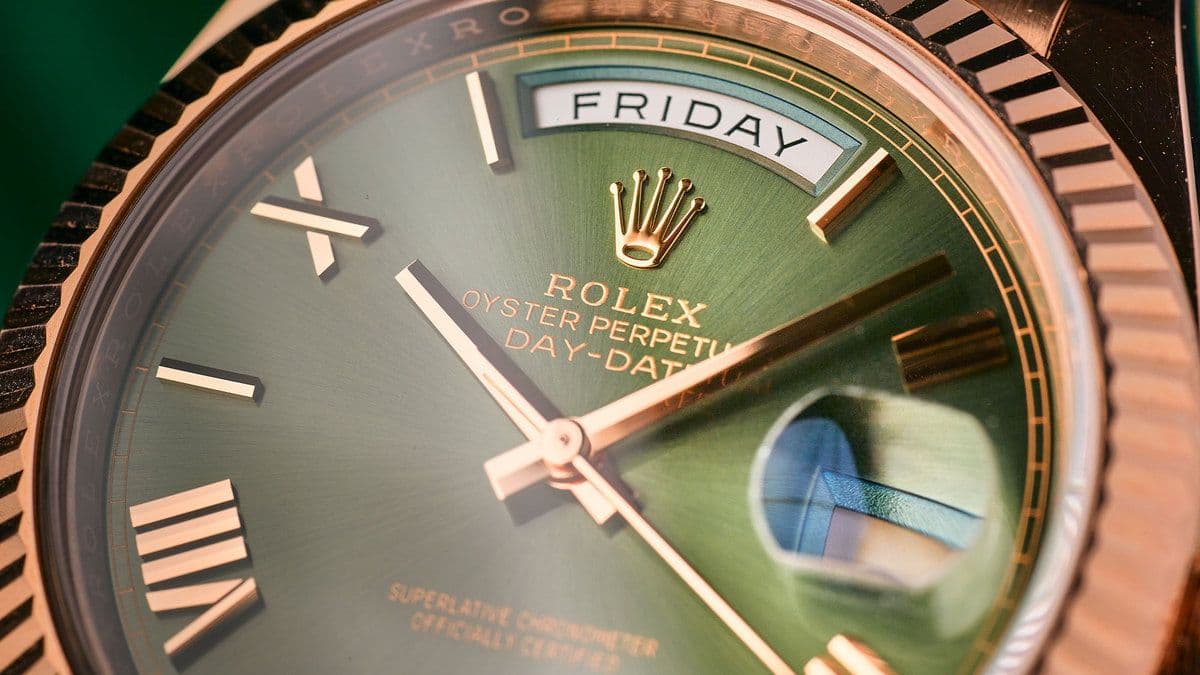Join Head of Watches Charles Tearle below, as he discusses his career in the luxury watch industry, the evolution of the market and valuing luxury vintage watches.

It's About Time: Valuing Vintage Watches
3 March 2025
Charles Tearle
I started in the vintage and antique luxury watch industry, in retail, 35 years ago. This was before computer aided design (CAD) began being used in the manufacture of modern watches in the late 90’s, so there were far less highly complicated watches around than today. The market in general for collectable watches, which, although had started in the late 1980’s, was still relatively insignificant. A £200,000 watch was virtually unheard of. A Patek Philippe perpetual calendar chronograph was £35,000, a steel Rolex Daytona was available at retail. (Though, since its release in 1988, the automatic steel Daytona has never been available to most people at retail, no matter how long your name is on a wait list.) The biggest difference today? In the 90’s and even early 2000’s, you could wear a valuable watch walking around London without fear it would be stolen.
While living in Los Angeles, I attended a prestigious art auction and, as is in my nature, was assessing (without judgement) everyone’s watches when I passed one that I couldn’t quite place. Realising what I had just seen, I stood next to the owner and casually asked if he was really wearing a million-dollar Patek Philippe SkyMoon Tourbillon wristwatch. Taken aback he covered his wrist. Once I explained my position in the company, he relaxed, before quickly correcting me it was actually worth $1.5 million. Apparently, he paid (at the time) US$40,000 a year in insurance to wear it daily.
When it comes to the value of modern, or current production watches, where a confirmed value can be established, I assume, as a specialist rather than an insurer, it is a matter of risk vs cost. However, as experience has taught me, what happens with rare vintage watches? As an example, a very rare Rolex Daytona variation of the reference 6263 where the dial is printed in vertical order format, Rolex Chronograph Daytona, nicknamed ‘Daytona Sotto’ (Sotto is Italian for below) were created as spare parts put together within a very small serial number sequence in 1967. For me, a good, clean, original example of this model would sell at auction today in the region of £1,200,000. Yet, a lesser example of the same watch with replaced parts would make more in the region of £200,000.
So, how much do you insure it for, and where do you find a qualified enough watch expert to determine the condition? I’ve personally seen insurance valuations for watches and jewellery compiled by a qualified gemmologist, as is traditional, where the watches have been described completely incorrectly, either with incorrect values or, in worse case situations, describing a completely different watch. Replacement or fake parts for vintage watches has also become an issue within the industry. Without provenance, I look at each rare vintage watch as incorrect until I can prove to myself it’s genuine. I sincerely believe everyone in my situation should take a similar approach. Within the insurance industry, protecting yourself against over-insurance, or incorrect insurance, I can only assume is a priority, considering what the press state is 'an epidemic of watch theft' both in person and from homes. The problem, I imagine, is find a suitable watch expert, although the running joke today is that with the aid of google, everyone’s an expert. I would really like to hope that as the watch market and essential need to insure watches continues to expand, dedicated watch specialist’s, rather than gemmologists, are used to provide the valuation and serial numbers always listed.
I’ve noted the growth in the watch market changing slightly as people seek out, less recognisable, brands they can confidently wear during summer. I did propose once the idea of a small fabric cover on your wrist that would hide the watch - it didn’t take off.
In the meantime, the police have told us in the industry as well as friends that are retailers, as we are potential targets, to the leave the Rolexes at work. I do love London, just maybe not this side of London.
CHARLES TEARLE
Head of Watches Charles Tearle began his journey in the luxury watch industry in 1990, specialising in vintage and antique wrist and pocket watches for a prestigious London retailer, working with them for over a decade. Expanding into auctions, Charles established the Watch Department in America for a significant British auction house operating internationally before transferring to a watch-dedicated auction company, where he discovered numerous previously unknown rare watches in the States. During this same period he was the watch expert for popular television programme ‘The Antiques Roadshow’ on PBS. Moving from New York to Hong Kong as a Director and Head of Watches for Asia within a notable auction house, Charles brought the company to market leaders within the region. He had been a consultant for auction houses and collectors as well as a rare watch broker before joining Lyon & Turnbull to establish a standalone Watch Auction Department in 2024.
charles.tearle@lyonandturnbull.com
0207 930 9115
